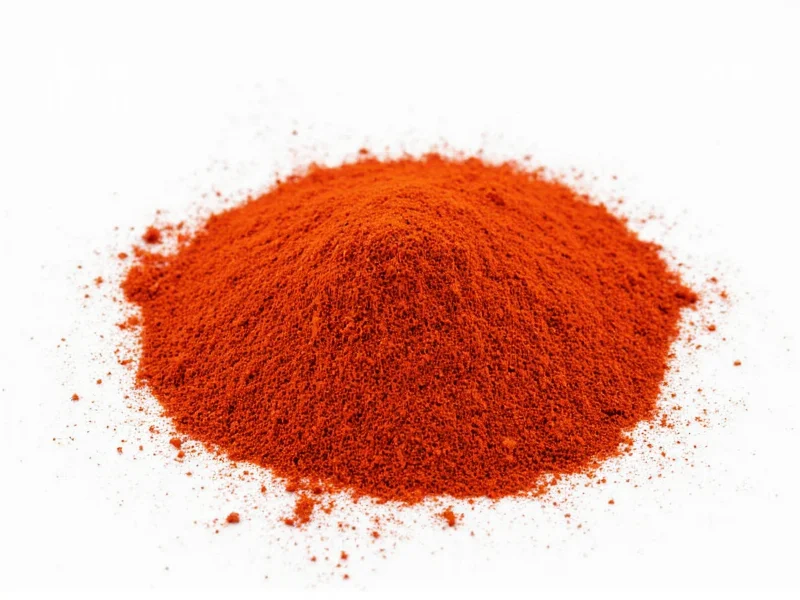When you're mid-recipe and realize you've run out of paprika, understanding how to properly substitute with cayenne pepper becomes essential kitchen knowledge. While both spices come from chili peppers, they serve distinctly different purposes in cooking that affect flavor balance, heat level, and visual appeal of your dishes.
Understanding Paprika and Cayenne: Fundamental Differences
Paprika and cayenne may look similar in the spice cabinet, but their culinary properties differ significantly. Paprika ranges from sweet and mild to moderately spicy depending on variety, while cayenne consistently delivers intense heat. The Scoville scale reveals why substitution requires caution: standard paprika measures 100-500 units, whereas cayenne clocks in at 30,000-50,000 units.
These differences explain why many home cooks searching for paprika substitute cayenne ratio need precise guidance. Mistaken substitutions often result in unexpectedly spicy dishes that cannot be easily corrected once prepared.
When Cayenne Works as a Paprika Substitute (and When It Doesn't)
Cayenne functions as a viable substitute only in specific culinary situations. Consider these scenarios:
| Recipe Type | Substitution Viability | Recommended Adjustment |
|---|---|---|
| Meat rubs for grilled foods | Good | Use 1/4 tsp cayenne per 1 tbsp paprika |
| Chili or spicy stews | Excellent | Use 1/8 tsp cayenne per 1 tbsp paprika |
| Deviled eggs or potato salad | Poor | Seek alternative substitutes |
| Spanish or Hungarian dishes | Unsuitable | Traditional paprika essential |
For those wondering can I use cayenne instead of paprika in traditional recipes, the answer depends on cultural authenticity requirements. Authentic Hungarian goulash or Spanish chorizo rely on paprika's specific flavor that cayenne cannot replicate.
Precision Substitution Guidelines for Home Cooks
When substituting cayenne for paprika, precision matters more than with most spice substitutions. Follow these professional kitchen guidelines:
- Start with minimal amounts - Begin with 1/8 teaspoon cayenne per tablespoon of paprika called for
- Taste incrementally - Add more in tiny increments after 5-10 minutes of cooking
- Compensate for flavor loss - Add 1/4 teaspoon smoked paprika (if available) or 1/8 teaspoon garlic powder to approximate depth
- Adjust liquid components - Increase dairy or sweet elements slightly to balance heat
Professional chefs searching for cayenne pepper replacement for paprika in commercial kitchens often maintain separate substitution charts for different recipe types, recognizing that a universal ratio doesn't exist across all culinary applications.
Better Alternatives When Cayenne Isn't Ideal
For many recipes, especially those requiring paprika's signature color and mild flavor, consider these superior alternatives:
- Smoked paprika - Use 1:1 ratio for dishes needing smokiness without heat
- Red bell pepper powder - Blend dried roasted red peppers for color without spice
- Tomato paste + pinch of chili - For liquid-based recipes needing color and mild flavor
- Chili powder blend - Contains paprika plus other spices (use 3:4 ratio)
Understanding what to use if you don't have paprika requires evaluating your specific recipe's needs. Dishes relying on paprika primarily for color (like deviled eggs) need different solutions than those using it for flavor (like Hungarian stews).
Professional Tips for Successful Substitution
Seasoned cooks recommend these practical techniques when substituting cayenne for paprika:
"Always add heat gradually," advises Chef Maria Rodriguez, culinary instructor with 15 years of experience. "Unlike salt, you cannot remove excess heat once added. I recommend mixing the cayenne with a small amount of liquid first to distribute evenly before incorporating into your dish."
For those concerned about paprika substitute cayenne heat difference, consider these rescue techniques if you've added too much cayenne:
- Dilute with additional recipe ingredients
- Add dairy (yogurt, sour cream, or coconut milk)
- Incorporate acid (lemon juice or vinegar)
- Add sweetness (honey or sugar)
- Include starch (potatoes or rice) to absorb heat
Remember that heat perception increases as food cools, so test temperature-appropriate samples when adjusting spice levels.
Storage and Freshness Considerations
Both spices lose potency over time, but at different rates. Paprika retains flavor for 2-3 years while cayenne maintains heat longer (3-4 years). Always check freshness before substituting - stale paprika requires more volume, which would make cayenne substitution dangerously hot if not adjusted.
Store both spices in airtight containers away from light and heat. For critical recipes, replace paprika annually and cayenne every 18 months to ensure consistent results when making substitutions.
Can I use cayenne pepper instead of paprika in tomato sauce?
Yes, but with extreme caution. Use only 1/8 teaspoon cayenne per tablespoon of paprika called for, and consider adding 1/4 teaspoon sugar to balance the heat. For traditional Italian tomato sauces, however, cayenne substitution significantly alters the authentic flavor profile.
What's the exact paprika to cayenne ratio for chili?
For chili recipes specifically, use 1/4 teaspoon cayenne per 1 tablespoon of paprika. This maintains the dish's traditional heat level while providing similar color. If using smoked paprika originally, add a pinch of liquid smoke to compensate for flavor differences.
Does cayenne have the same color as paprika?
No, cayenne typically has a slightly darker red-orange hue compared to paprika's brighter red. While both provide color, paprika delivers a more vibrant appearance that cayenne cannot fully replicate, which matters in dishes where visual presentation is important.
Can I substitute cayenne for smoked paprika?
Substituting cayenne for smoked paprika loses the critical smoky flavor element. If you must substitute, use 1/4 teaspoon cayenne plus 1/8 teaspoon liquid smoke per tablespoon of smoked paprika. Better alternatives include chipotle powder (use 1:2 ratio) or regular paprika with added liquid smoke.
How do I fix a dish that's too spicy after substituting cayenne for paprika?
To reduce excessive heat from cayenne substitution: 1) Dilute with additional base ingredients, 2) Add dairy products like yogurt or sour cream, 3) Incorporate acid with lemon juice or vinegar, 4) Add sweetness with honey or sugar, 5) Include starches like potatoes that absorb capsaicin. Remember that heat perception increases as food cools, so test at proper serving temperature.











 浙公网安备
33010002000092号
浙公网安备
33010002000092号 浙B2-20120091-4
浙B2-20120091-4